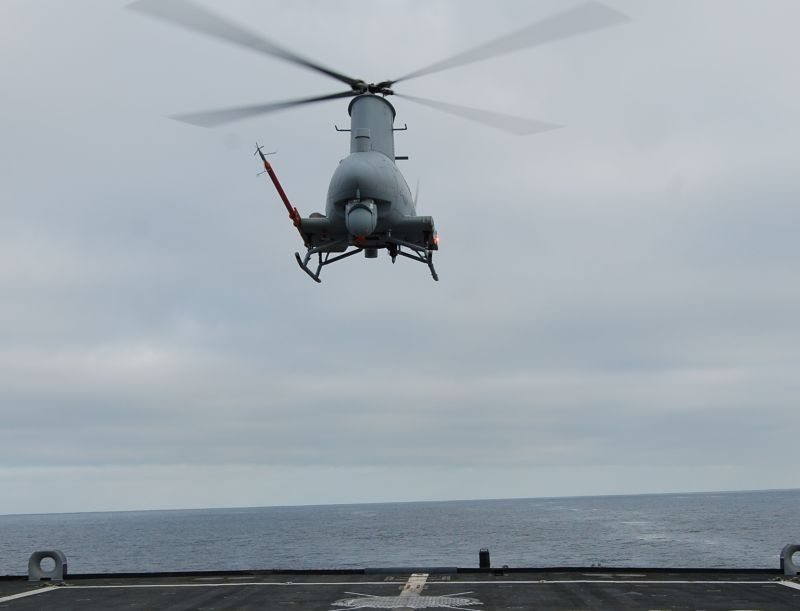In a recent U.S. Navy and Northrop Grumman exercise, a Fire Scout unmanned helicopter successfully sent sensor data to the cockpit display of a MH-60 helicopter.
The demonstration, which took place Oct. 25 near Patuxent River Naval Air Station, Md., paves the way for improving the speed at which field commanders can make informed decisions during military operations.
“Fire Scout complements the Navy’s manned helicopters by effectively extending the range and area of ship-based intelligence gathering operations,” said George Vardoulakis, vice president for tactical unmanned systems for Northrop Grumman’s Aerospace Systems sector.
Until now, intelligence, surveillance and reconnaissance data gathered by Fire Scout has been sent to its host ship for further dissemination.
During the demonstration, crew members aboard a nearby U.S. Coast Guard boat also viewed Fire Scout’s sensor data in real time using a remote terminal.
The capability also improves Fire Scout’s communications relay function by allowing multiple units to share real-time information to coordinate actions without delay.
Fire Scout features a modular architecture that accommodates a variety of electro-optical, infrared and communications payloads. These payloads provide ground- and ship-based commanders with high levels of situational awareness and precision targeting support.
The system’s ability to operate from all air-capable ships makes it particularly well suited for supporting littoral missions such as drug interdiction, search and rescue, antipiracy operations, reconnaissance and port security.










